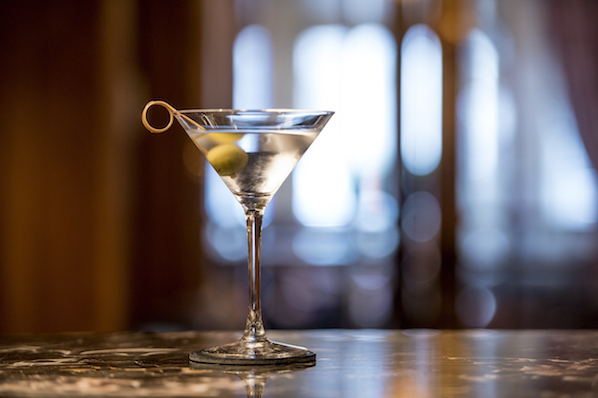Blog (How to make the perfect martini)
Четверг, 19, мая 2016
- Filed under:
- The Westbury
- Written by
- Nicola Brady
How to make the perfect martini
The secret to the perfect cocktail
While there have been amazing strides made in the cocktail world over the last few years, sometimes you just want a classic. Whether you’re overwhelmed by the number of choices on offer, or if you simply don’t know quite what you fancy, nothing hits the spot like a classic Martini.
But even the classics can be complicated – we’ve seen Espresso Martinis, Appletinis, and any number of other combinations in a classic Martini glass. So what exactly is a Martini, and how do you mix the perfect one?
We spoke to Micheal O’Shea, award-winning mixologist and head bartender at The Westbury, to find out.
What are the ingredients for a martini? Should it be made with gin or vodka?
The martini requires 2 ingredients - vermouth and either gin or vodka. It is purely down to individual tastes whether you choose gin or vodka. Once you decide, you then have a wealth of brands that bring different qualities to a martini.
What are the quantities and method for making one?
The basic recipe for a martini is 1 part vermouth and 6 parts gin or vodka. This ratio has changed dramatically over the past century, going from a 3:1 ratio to the likes of 50:1.
Winston Churchill used to say ‘just looking at a bottle” was enough vermouth in his Martini.
Add your ingredients to either a cocktail mixing glass or shaker. If using a mixing glass, stir the ingredients with ice until desired dilution and chilling is achieved. If using a shaker, vigorously shake all the ingredients with ice.
For both methods, you need to strain the ingredients into a chilled martini glass, so you leave all remnants of the ice behind. Then you can garnish, either “with a twist” of lemon, or with olives.
Should it be shaken or stirred, and what’s the difference?
There are two methods used for making a martini. Stirred is the classic method but, like a certain British spy, some prefer shaken. Both achieve the aim of chilling the cocktail (there are few things worse than an under chilled Martini).
What makes a Martini dry or wet, or dirty?
This refers to the amount of vermouth used in the cocktail. For instance, a 3:1 ratio would be considered a ‘wet’ martini whereas a 50:1 would be seen as extremely dry with hardly any vermouth present. A dirty martini is achieved by adding olive brine to the mixture.
What garnishes work the best?
The traditional garnishes are the twist (of lemon) or olives. This again comes down to personal taste. I prefer to add a nice fresh twist to dry martinis and olives to wetter ones. Some people are known to stuff their cocktail olives with blue cheese. Using twists from other fruits like grapefruit, limes or oranges add a pleasant variation on the classic twist.
Does the kind of vermouth you use make a difference? Which is the best?
The type of Vermouth you use can have a big impact on your drink as long as enough of it is being used (so not too dry). There are a number of different vermouths on the market with the likes of MARTINI and Noilly Pratt being two popular brands. The martini drank by James bond is known as a Vesper martini and Lillet Blanc from the south of France is the vermouth used. It’s always good practice to treat dry vermouths like white wine and keep them in the fridge.
What do you think is good to eat with a Martini?
The Martini is known as an aperitif cocktail and as such is intended to cleanse your palate and sharpen your appetite. Thus it is preferable to drink a martini before sitting down to a meal. Should you choose to eat something that goes well with a martini I would suggest something light, like scallops. You don’t want to drink a martini whist eating anything that would overpower it. Think of foods that you would pair with a dry white wine.
Do you have any secret tips for making an excellent Martini?
Okay, so, the main thing you are trying to achieve when making a martini is getting it as cold as possible. Ice isn’t the only thing that needs to be cold. Put your glasses into the freezer. Keep your gin, Vodka and vermouth in the fridge. Only remove your glass at the last minute. Use large good quality ice cubes. The melted ice makes up a significant part of your drink so make sure its good clean ice. Keep your garnishes clean and fresh.



